'Find a way to make this happen': Phoenix planned homeless shelter on land contaminated for decades
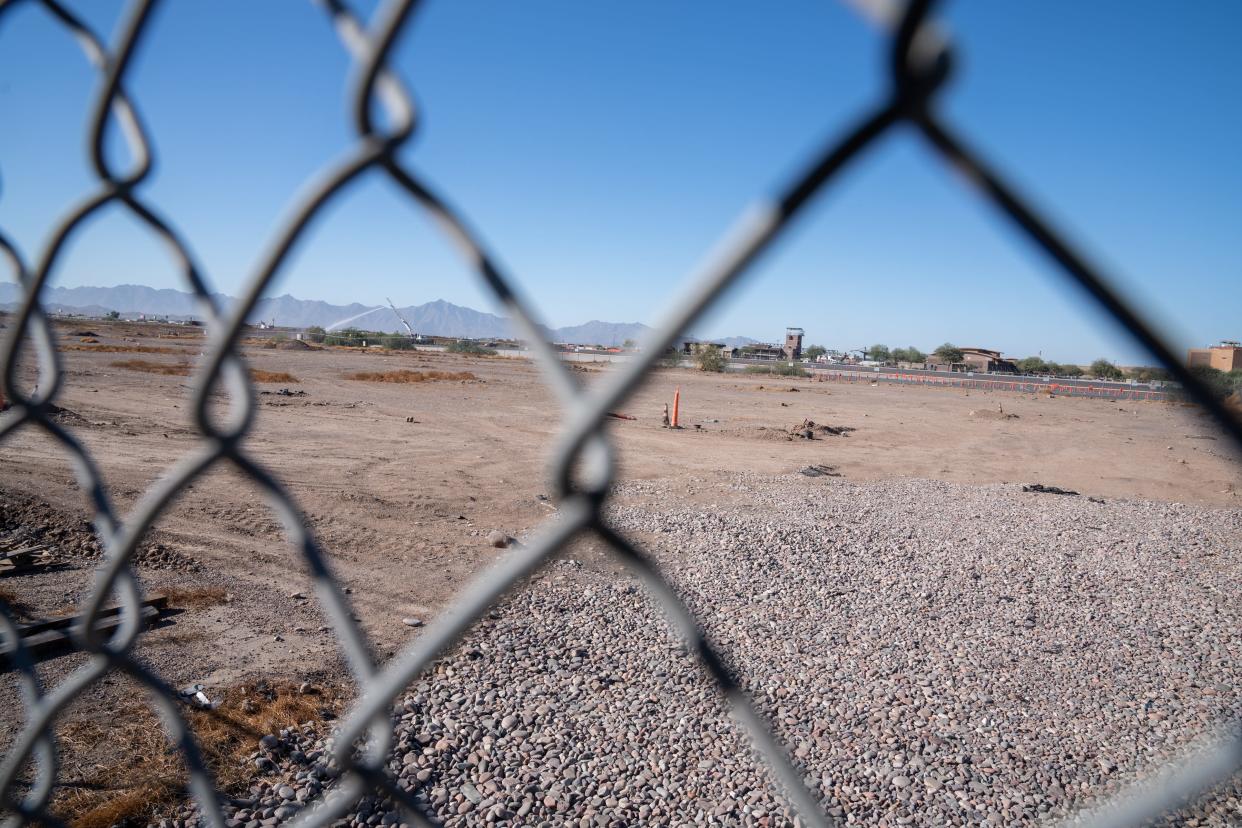
Phoenix officials considered relocating hundreds of unhoused people near downtown to an industrial site with a history of carcinogenic contamination from petrochemicals and heavy metals.
The city-owned site at 22nd Avenue and Lower Buckeye Road had been a dump and a police impound lot. The contamination there risks human health, water and air.
And city officials knew it. A series of city-commissioned analyses since 1997 showed it.
But they had to race against the clock and scramble to address legal challenges over the city's handling of "The Zone," the homeless encampment a few blocks from downtown. In December 2022, rolling the dice before a final site study, city officials announced plans to put shelters on the contaminated land.
The city's hands were tied by a 30-year-old ordinance that forced it to site shelters on industrial property. This was the only available city-owned site large enough and zoned appropriately, they said.
Officials gambled.
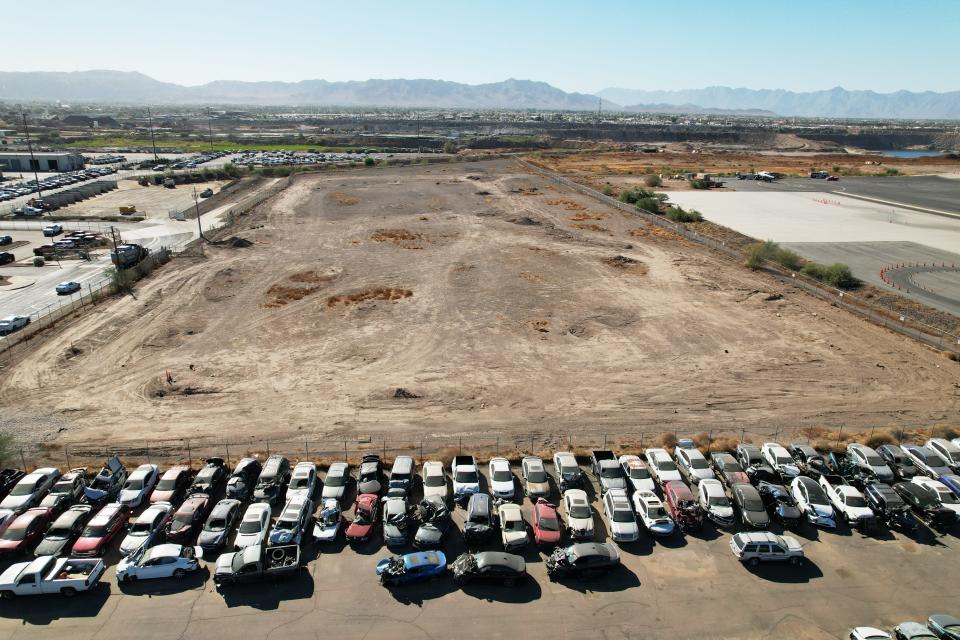
They hurried to get the site ready before the deadly summer heat and were under pressure to get unsheltered people under a roof. They hoped they could remediate the site, and quickly.
But the gamble failed.
The site assessment revealed toxic levels of carcinogens and other harmful chemicals. The level of methane alarmed experts.
One who reviewed the contamination reports called the site "dangerous" and said it faces a risk of combustion.
Mayor Kate Gallego acknowledged the city could have done a better job. She plans to announce changes soon to improve how the city manages construction projects.
City planners involved with the effort say they faced a crisis that forced them into a lose-lose choice.
Take time to study the contaminants, and it would take too long to get people off the streets before triple-digit temperatures hit. That would add to criticism that the city was slow to tackle the homeless problem.
Plan a shelter before the risks were known, and all that work could be for nothing if the site couldn't be cleaned up.
City officials chose the unsuccessful second option, but they say they don't regret trying.
What the city was facing
When officials announced the south Phoenix shelter, the industrial setting took a back seat to the innovative shipping containers that would be included.
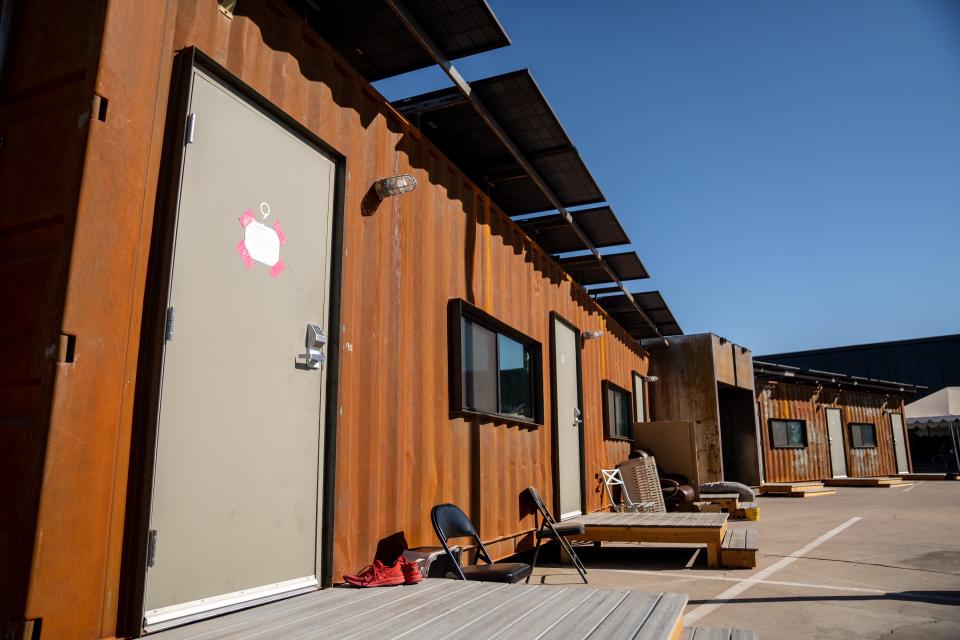
The solar-powered container homes were top of the line. They offered tenants privacy, air conditioning and a bit of dignity. The city spent $3 million on the units, and officials were proud to showcase them along Roosevelt Row.
The campus would provide much-needed respite to a couple hundred unhoused individuals ahead of the 2023 summer.
It was exactly what the city needed.
Solar-powered housing: Shipping container shelters planned for southwest Phoenix
The homeless encampment near Phoenix’s human services campus at 12th Avenue and Jackson Street had become a persistent problem.
Hundreds of unhoused people crammed into tattered tents and sleeping bags that lined the sidewalks, block after block.
But if The Zone had been a headache for the city since 2018, when it cropped up, it swelled to a migraine in August 2022.
Business owners and residents sued the city that month for failing to control the encampment, calling it a “humanitarian crisis.”
The Zone: Phoenix residents sue city over homeless encampment, claiming irreparable harm
Beyond damage to their business, The Zone jeopardized the property owners’ safety, they said in court. They pointed to drug needles and human feces littering their yards, employees being assaulted, car windows being smashed and front yards being lit on fire.
Later, a 47-year-old man was bludgeoned to death, then set on fire and left in a dumpster. It was getting bad. And noticed outside Arizona. Members of the City Council bemoaned the national press attention at public meetings, including a major story from The New York Times that ran in March.
Before the trial, Maricopa County Superior Court Judge Scott Blaney in March ordered the city to begin cleaning the area.
But in June, when the shelter site was initially supposed to open, officials called it off altogether.
The abrupt cancellation left the city with no place for the container homes and less indoor housing for those from The Zone.
Despite Mayor Gallego repeatedly stressing a desire for indoor housing solutions, city staff clambered to buy state land to construct a structured campground.
More proposed shelters: Phoenix planning campground for homeless people living in 'The Zone'
The purchase cost Phoenix $5.4 million.
The City Council had to approve spending another $192,000 to place the container homes at different locations temporarily.
City staff offered a limited explanation. The news release pointed to “environmental issues” that made the site “unsuitable for construction.”
When pressed, city spokesperson Kristin Couturier told The Arizona Republic methane had been a problem.
The Republic repeatedly asked for more information in the weeks after. The full story emerged only after The Republic lodged a public records request and the city turned over hundreds of documents.
The trove included environmental analyses and internal meeting notes from the late 1990s to the present. They revealed land contamination at Lower Buckeye Road and 22nd Avenue dating back nearly 30 years.
On multiple occasions, the city was made aware of harmful pollutants found in the soil. Each time, the city chose not to fully remediate the land, opting instead for the cheaper way out.
The known contamination raises questions about why the city ever considered the site suitable for human habitation.
Arizona State University earth sciences professor Vernon Morris said methane levels in the 2023 environmental analysis were so high they presented a “combustion” risk. That and other pollutants, some cancer-causing, rendered the site "dangerous now," he said.
Deputy City Manager Alan Stephenson said in an interview city officials knew about the contaminants identified in 1997 when selecting the site but believed quick remediation would be possible.
Communications Director Dan Wilson said the analyses, while prompted by construction, ultimately were done to ensure human health.
Placing the shelter in a heavy industrial area, Wilson said, wasn't the preference. Rather, it was forced by city zoning laws from 1991 that restrict homeless shelters to industrial areas.
The mayor said the circumstances illustrated a "clear" need for "more expertise in construction management" and that she was challenging City Manager Jeff Barton to invest in such roles.
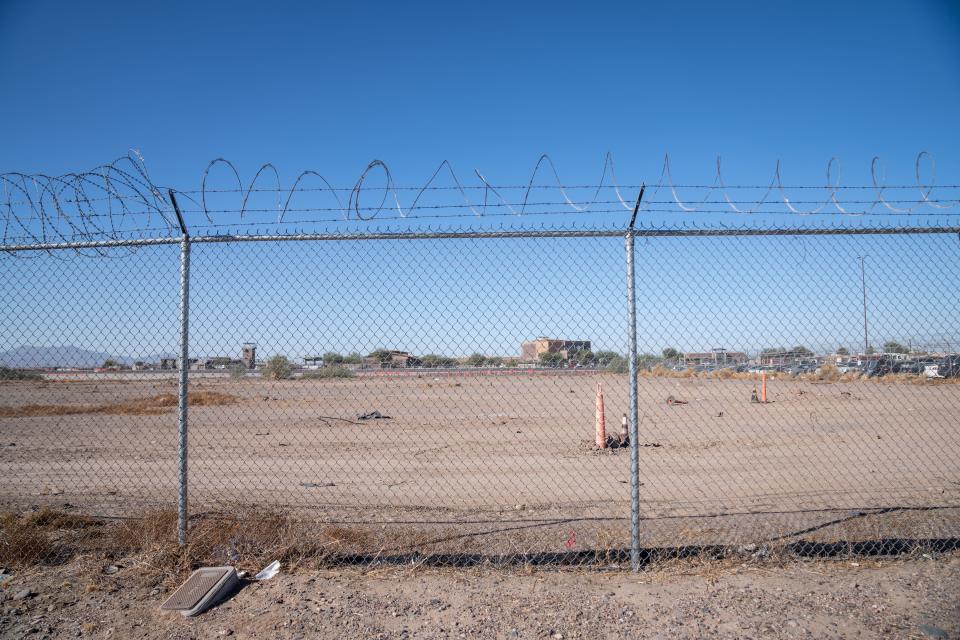
"We are making that change" with a new hire the city will announce soon, Gallego said.
"It's our job at the city of Phoenix to learn from all of the experiences we have and to not make the same mistakes twice," she said. "That's a challenge to the Office of Homelessness Solutions."
What the 2023 environmental analyses found
Before the city could start construction on the Lower Buckeye Road shelter, it had to conduct a geotechnical analysis.
In January, engineering firm GeoTek Inc. studied how to stabilize the soil for a site it said was likely used as a dump, then as a police impound lot. Consultants found concrete rubble, metal cable, fencing and other debris. They recommended excavating about 20 feet down across the entire 5-acre site.
But that was the pricier option, and the city balked.
The report said the city wanted to "limit earthwork" despite the "inherent risk." So the contractor came up with a solution. The city would “remove and recompact a portion” of the land, then cap it with a slab of concrete.
The city needed to chemically evaluate the land to understand how to safely dispose of the debris.
Engineering firm NV5 analyzed the land in June and found high levels of methane, benzene, chloroform, vinyl chloride and cis-1,2-dichloroethene.
The substances pose risks to human health if ingested, either by breathing in air, drinking water or touching soil that is contaminated, said Morris. The longer the exposure, the more severe the risks.
The methane levels were so high, Morris said, a spark or flash point in the area could trigger a “spontaneous fire.”
One of the soil samples found methane at 420,000 parts per million, about 8.4 times higher than the “lower explosive limit” of 50,000 parts per million.
Lower explosive limit indicates the lowest concentration of a substance that will produce a fire when presented with an ignition source.
The potential health risks of the 2023 findings
NV5 called the methane “an acute physical hazard during construction activities.”
Morris called it “shocking.”
“Definitely a combustion issue. ... The risk is, ‘Oh man, a flash point,’” Morris said, snapping his fingers once, “and things go up.”
City officials cited methane for scrubbing plans for a shelter on the site but said nothing publicly about the other pollutants.
The benzene concentration in one soil sample was five times higher than what is considered safe for human residential areas.
“That’s huge. That’s a breathing concern,” Morris said.
Benzene, an industrial chemical found in crude oil, is classified by the U.S. Environmental Protection Agency as a carcinogen. Long-term exposure to it has caused blood disorders and harmed reproductive health, including adverse effects on developing fetuses. Benzene is also linked to an increase in leukemia.
Stephenson said city officials were looking out for and concerned about benzene, but once they saw the methane levels, they knew the site was a no-go.
Asked if the city would have proceeded had methane not been a problem, Stephenson said officials initially thought anything outside of methane could probably be remediated. Conversations never got that far.
Chloroform was found roughly 1.5 times higher than the safe level. Vinyl chloride in one sample was 28.6 times higher.
Chloroform is considered “a probable human carcinogen,” by the EPA. Short-term effects include central nervous system depression, while chronic exposure can include hepatitis and jaundice, and depression and irritability.
Vinyl chloride can cause dizziness, drowsiness and headache in the short-term, and liver damage in the long-term, according to the EPA.
“Cancer is a major concern from exposure to vinyl chloride via inhalation,” an EPA fact sheet says, “as vinyl chloride exposure has been shown to increase the risk of a rare form of liver cancer in humans.”
Morris said the mixture of chemicals heightens the overall health risk.
"Imagine getting bitten by multiple venomous snakes of different varieties instead of a large bite by a single venomous snake," he said.
The volatile substances could come up from the ground as a gas, causing an inhalation risk, or migrate beneath the surface and contaminate other areas, Morris said.
Contamination first found in 1997
The Maricopa County Assessor's website indicates the city bought the parcel at the southwest corner of Lower Buckeye Road and 22nd Avenue in 1993.
Four years later, city officials sought to develop it.
There was a petroleum storage building on or near the land, according to city documents, and officials wanted to build an additional warehouse to store surplus materials.
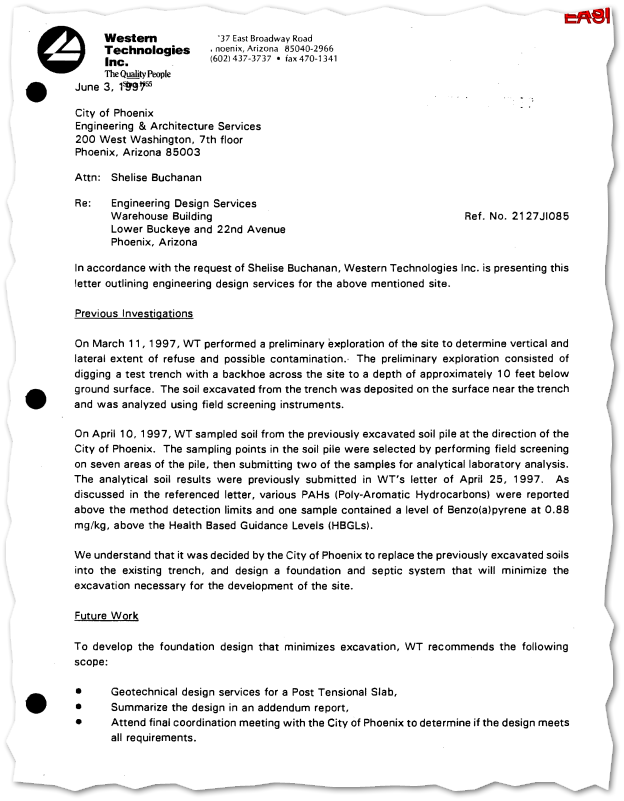
In 1997, Phoenix tested the soil and found leftover contamination from petroleum, or fuel products.
High levels of Benzo(a)pyrene, a chemical associated with oils and industrial processes, were found.
Short-term exposure to the substance can cause red blood cell damage, leading to anemia, and can suppress the immune system, the EPA says. Long-term, it can cause cancer and lead to developmental and reproductive effects.
The substance was found at a level 4.6 times higher than what the state considered safe for residential areas.
That nearly threatened the project’s viability. Based on state guidance, “The soil should be classified as special waste … (and) removed and disposed of,” city officials said, according to meeting notes.
The cost was estimated between $15,000 and $20,000.
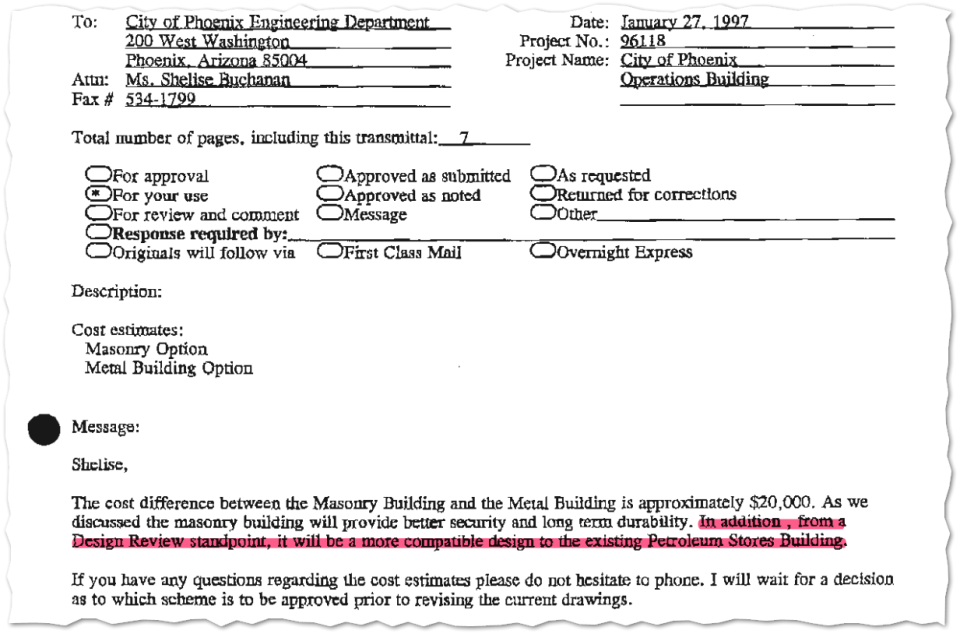
City officials paused the project, concerned the disposal costs would “far exceed” their budget limitations, meeting notes show.
A month later, they decided to move forward. Rather than dispose of the waste, city officials opted for a cheaper route. They would put it back and cap it with concrete and a septic system to “minimize the amount of excavation,” notes show.
It was supposed to cost just more than $1,000. After problems with the contractor, however, the warehouse never came to fruition.
Nearly a decade later, the city tried again.
A partial remediation in 2012
An investigation of the land in June 2012 “identified arsenic, copper, and lead at concentrations exceeding residential soil remediation levels.”
The arsenic was believed to be naturally occurring, but not the copper and lead.
An estimated 2,800 tons of metal, plastic and concrete debris were believed to be four to six inches below the soil. Phoenix remediated the land, but only to a depth of one foot.
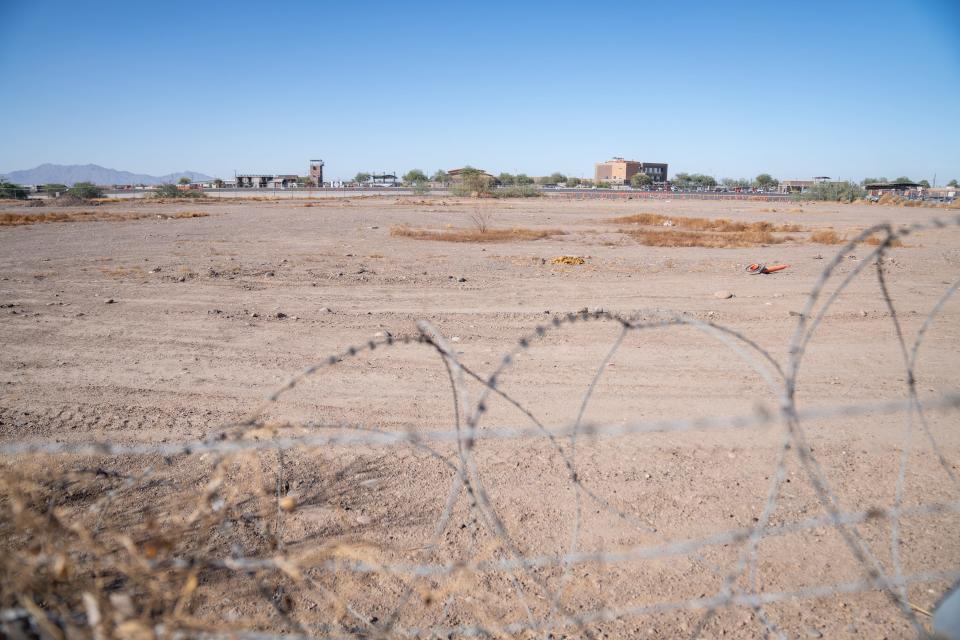
When the contractor found buried debris deeper than one foot, “The city authorized the contractor to cease excavation,” the remediation report from 2014 says.
The excavated soil that was contaminated from arsenic was disposed of in Tempe. It cost the city $1,849, according to an invoice from Environmental Response Inc.
The warehouse, however, again did not come to fruition, Stephenson said. Instead, the land became an impound lot.
Zoning laws force shelters to industrial parts of city
The parcel at Lower Buckeye Road is near a recycling facility, concrete manufacturing plant, and a fire training academy. There’s also TransDev, where city buses are maintained and washed.
It's zoned by the city as "A-2, Heavy Industrial." Permitted uses include aircraft and commercial truck repairs, storage for salvage and dismantling activities.
It’s the type of land city zoning laws try to segregate from residential neighborhoods as much as possible. Aside from being unsightly, heavy industrial areas are often associated with risks to human health because of pollution.
Asked why the site was ever selected for a shelter, Wilson and Rachel Milne, the city's Office of Homeless Solutions director, said Phoenix zoning laws, enacted by the City Council, only allow shelters in A-1 and A-2 areas.
A-1 areas are for "light industrial districts" that are "not offensive to nearby commercial and residential uses." Beverage manufacturers, crematoriums and freight yards are permitted.
The City Council codified the restrictions in 1991 and 1994.
For Milne, finding city-owned land with proper zoning was step one. Finding a lot large enough for the shelter campus was step two.
Two sites met the criteria, she said. Both were on Lower Buckeye Road: one was at 35th Avenue and the other at 22nd Avenue. Another city department had plans for the 35th Avenue site, so 22nd Avenue was left.
Milne wasn't disappointed. She saw opportunity.
The lot was six acres, and there were no residential areas nearby to oppose the shelter's construction. The waste station wasn't a detriment, it was a career opportunity. The city planned to offer workforce training, and a job within walking distance would be a good thing.
Political, legal pressures led to a rushed project
At the 22nd Avenue site, Milne and Stephenson thought they could remediate the contamination and build the campus quickly.
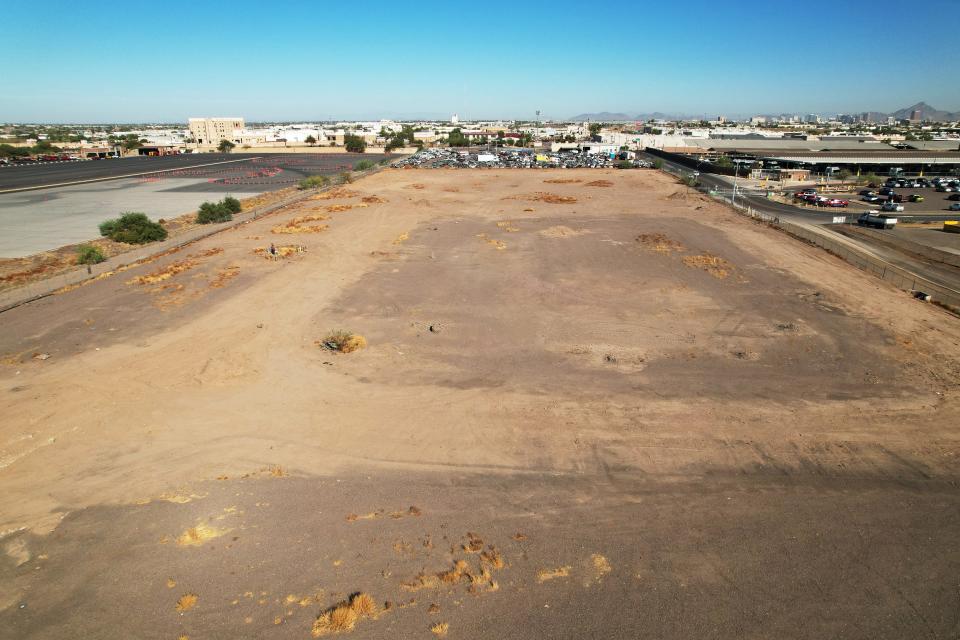
Normally, the city would have conducted the land analyses before the Office of Homeless Solutions began planning the shelter with partner organizations at the site, Stephenson said.
But this was no normal situation. The political and legal pressure to get people from The Zone housed — indoors — was at an all-time high.
"It was, 'Find a way to make this happen so that it's open this summer.' That was the direction to staff," Stephenson said. "And so that's what we were trying to do ... It was a decision about doing this to try and meet the expectation of the council and the public."
The solution: Planning would do the pre-construction work while the homeless solutions office would simultaneously plan the shelter.
City officials thought the worst-case scenario would be remediating a couple feet of soil from oil or gas leaks from the police impound lot. The engineer's office knew about contamination from 1997, but contamination can change over time, and there was no guarantee the contaminants would remain, Stephenson said.
When the NV5 analysis confirmed a worse-than-worst-case scenario for the Planning Department, the shelter plans were torpedoed, too.
A devastating blow, but the work is not lost, city says
Looking back, Stephenson said it was essentially a lose-lose situation.
"If they (the analyses) had passed, and we didn't have these problems, then we would have had a hard time justifying, 'Well why didn't you do anything else so that this thing can be ready to go?" Stephenson said.
In other words, if officials had chosen not to do the dual track method, and the analyses had come back clean, then Milne's office would have had months' worth of planning to begin and they'd be delayed.
And hundreds of unsheltered people would be living on Phoenix streets in the heat of summer.
The shelter is delayed now, anyway, but from the city's point of view, it's not for lack of trying. Dual track, even with its inherent risks, was the only chance of delivering a shelter before summer.
Milne said she was devastated 22nd Avenue didn't work, but she believes not much work was lost. The shipping containers are being used at multiple locations. She plans to take the shelter site plans and use them at a future location.
She's not sure where that will be, though. The office will need to look again for industrial pieces of city-owned land. It may come down to rezoning existing city land or buying properly zoned land.
The elected officials' role
Mayor Gallego said she wasn't informed of the extensive environmental concerns until just before the city pulled the plug on the project. Going forward, she said she'd like to see earlier environmental review.
The mayor did not say whether she had concerns about the site early on, given its industrial location. Nor did she explicitly answer questions about whether the city should reconsider zoning rules that restrict shelters to industrial-only areas.
Instead, Gallego said there is a "huge amount of urgency" to find housing and most of the city's investments were focused on transitional hotel housing, which are typically in areas zoned for commercial use.
She favors "smaller, more distributed facilities with personalized services," she said.
Vice Mayor Yassamin Ansari, who represents District 7 which includes the 22nd Avenue site, also said she was not made aware of the site's early history of contamination.
Nor was she informed of the details of the 2023 analysis. Ansari was also unaware that Phoenix's zoning laws precluded shelters to only industrial areas.
"Now it makes more sense why the sites that they identified had to be in District 7," Ansari said, adding she supports changing zoning laws to allow shelters in a wider variety of places.
"Homelessness is not unique to any one district, (so) I think there should be more openness from communities to provide solutions and that just means that we should not be restricting to just A-1 and A-2," Ansari said.
What's next for the land?
RPM's geotechnical report suggests the risk of contamination spreading to adjacent areas or groundwater supplies is low.
Groundwater at the site is between 50 and 70 feet below the surface, according to data from the state water agency, RPM's report says. And risk of "liquefaction" or "ground lurching" is "considered negligible."
The fact that contamination may be unlikely to spread, however, doesn't mean nearby areas aren't similarly contaminated.
There are no immediately adjacent residential areas near Lower Buckeye Road and 22nd Avenue, but an evaluation of surrounding areas could be beneficial to mitigate risk to workers, Morris said.
To the extent that any nearby surface water is contaminated, the risk is low so long as individuals are not fishing there or planting gardens, Morris said.
Ansari said she would be interested in evaluating the surrounding land. Stephenson, however, said the city only has plans to remediate the 22nd Avenue site, not examine nearby areas. He did not have a timeline for remediation.
As for the unhoused individuals who were supposed to live at Lower Buckeye Road, some have been sheltered in the container homes at new locations. Some have been placed in hotel shelter spaces. Some have gone to communal shelters.
The city opened its structured campground at 15th Avenue and Jackson Street earlier in November. Approximately 300 people will be housed there.
The city conducted two environmental assessments of the site beforehand. Milne said minimal levels of asbestos and lead were found but remediated.
So far, about 20 individuals have moved in, Milne said.
Reporter Taylor Seely covers Phoenix for The Arizona Republic / azcentral.com. Reach her at tseely@arizonarepublic.com or by phone at 480-476-6116.
This article originally appeared on Arizona Republic: Phoenix planned homeless shelter on contaminated land

